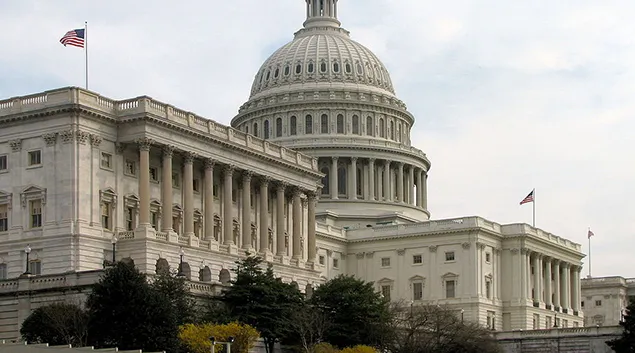
The Senate's latest attempts to repeal and replace the Affordable Care Act would yank $215 billion in federal funding out of the healthcare system in relatively short, order, and according to a new analysis from the consulting firm Avalere Health, those cuts would later swell to about $4 trillion.
The Graham-Cassidy bill will likely come to a vote before the Congressional Budget Office is able to provide its evaluation of the bill's effects, which means Avalere's estimates will likely be one of the only sources available before its ultimate fate is decided.
[Also: Senate Majority Leader Mitch McConnell says Graham-Cassidy will go before Senate next week]
From 2020 to 2026, total federal spending would be reduced by $215 billion, and according to the analysis, 16 states would get more money out of the deal. But 34 states and the District of Columbia would lose out, and seven states would see funding reductions about $10 billion.
By 2027, the total national cut would swell to $489 billion, and from 2027 to 2036, federal spending would shrink by more than $4 trillion. At that point, every state would be slated to receive less federal funding than what is currently projected if the ACA remains in place. Federal funding reductions would range from about $4 billion in South Dakota to $800 billion in California.
[Also: Graham-Cassidy bill won't see full CBO score in time for Senate vote]
The proposed legislation would repeal the ACA's Medicaid expansion, premium tax credits, cost sharing reduction payments, individual and employer mandates, and the Basic Health Program. Instead, the bill would provide states with block grants to fund health insurance coverage in their state. The bill would also change the financing structure for the traditional Medicaid population from an open-ended approach to a fixed per capita cap or block grant approach.
In addition to the funding changes, the bill gives states the option to include a waiver in their block grant application that allows the state to waive the ACA's market rules. States would be given the option to waive age rating rules, essential health benefits, the prohibition on medical underwriting, and the required medical loss ratio for plans and enrollees who receive some benefit from the state's block grant funding.
[Also: Graham-Cassidy bill GOP's last-ditch effort to repeal ACA]
While the Avalere analysis doesn't attempt to project which states will pursue a waiver, nor which of the ACA's market rules states will attempt to waive, previous CBO analyses have projected the expected impacts of waivers. CBO previously estimated that similar flexibilities to those in the GOP bill would lead to lower average premiums, largely due to the reintroduction of medical underwriting and coverage of fewer services, and potentially higher enrollment in some states.
But the CBO also projected this flexibility to substantially increase costs of those individuals with significant medical costs, and those who would be at risk of medical underwriting.
Twitter: @JELagasse
Email the writer: jeff.lagasse@himssmedia.com